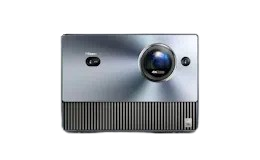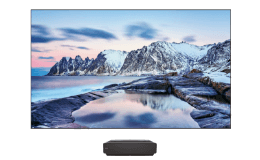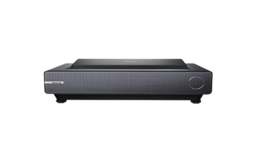Blog
Hisense’s expert FAQ guide to being energy efficient with your appliances
06.12.22

As energy bills soar to an all-time high, monitoring our gas and electricity usage has never been more important. But whilst the cost-of-living crisis has been high on the agenda for some time now, one fifth of Britons have admitted that they don’t fully understand how energy bills are calculated.
That’s 10 million people living in the UK who don’t know how they should be using their household appliances correctly to keep the energy bills down this winter.
To combat this confusion, Hisense, has pulled together an extensive FAQ guide to help the nation get the most out of their household appliances – and the lowest figure on their energy bills.
Understanding your household appliances
It may sound simple, but many homeowners don’t know which appliances generate the most amount of electricity – in fact, lots of people are causing more damage than good when it comes to switching up their household chores and appliances in their efforts to cut down on energy bills.
We’ve had a look at the most frequently asked questions online, to help the nation understand their appliances.
What appliance uses the most electricity in a household?
There are however, many ways in which you can reduce the energy consumption on your fridge or fridge-freezer, without having to switch it off.
For example, by ensuring your refrigerator appliances are set to the optimum settings, and not leaving the door open for longer than necessary (as this makes the motor work harder to stabilise the set temperature), are just a couple of small ways in which you can make a big difference. The way you arrange the items in your fridge can also help; for example, we’d advise avoiding any foods touching the back of the fridge to help regulate the temperature and airflow.
Do appliances use electricity when plugged in?
It’s a common concern that leaving appliances switched on at the socket wastes lots of electricity, but this is not something to worry about. If the product is completely switched off, then no power should be used whatsoever, and even if the appliance is on ‘standby mode,’ only 0.5 w of power is used, which is very minimal.
Did you know? Based on average prices, a TV left plugged in and on ‘standby mode’ will only cost £1-2 per year*.
Top Tip: If you’re looking for small ways to save pennies, it’s always best to switch off appliances completely and at the plug socket to ensure that they’re not using any unnecessary electricity. Just remember to keep your refrigeration products switched on!
Which appliances cost the most to run?
Generally speaking, tumble dryers tend to be the most expensive appliance to run, so switching up this part of your laundry routine to drying your clothes on a traditional clothes horse or drying rack, is an easy way to help cut down your energy bills.
Of course, defining what the most expensive appliance to run will ultimately come down to usage habits. If you have a larger household, it’s likely to be more cost effective to invest in a larger capacity washing machine, so that you can fit more clothes in one load, as opposed to doing multiple washes a day in a smaller washer.
What do the energy efficiency ratings mean for appliances? How are they calculated?
This is certainly one of our most frequently asked questions. Appliances are tested for how much energy they use during typical use. This gives them a rating on a scale of A to G; with A being the most efficient product of its class, and G being the least efficient. Some appliances use an older scale, from A+++ to G; with A+++ being the most efficient during typical usage.
In general, it’s good to keep in mind that appliances are categorized by their size. This means that two different sized appliances with the same energy rating might use different amounts of electricity (i.e. the larger the appliance requires more energy to power it).
Laundry:
What is a good rating on a washing machine? And what does this mean?
An A-rated laundry machine would be the best rated washing machine that you could purchase on the market. The rating is based on the following categories:
Energy Class, Annual Energy Consumption, Annual Water Consumption, Capacity, Spin efficiency, Noise Level.
Ratings of course are highly dependent on the individual consumer needs. Therefore, if you’re looking for a ‘good’ rating washing, you must ask yourself which factors you feel are the most important for you and your household. Is it purely energy class? Or perhaps you’re looking for a decent capacity to avoid multiple washes a day?
How much energy does a washing machine use? And what settings offer the best results?
The energy usage on a washing machine depends entirely on the settings that you use. It’s good to know that the warmer the water is, the more energy the unit will use, because the process to heat the water takes longer.
For example, a full load of a 10kg washing machine, set to 39 degrees on a 239-minute cycle (eco 40-60), will use 0.99 kwh energy*. Whereas, a full load of a 10kg washing machine, set to 20 degrees on a 129-minute cotton cycle, will only use 0.22kwh energy.* Based off the current kwh cost being 34p, 0.22kwh equals to 7.5p.
If your clothes are not soiled heavily, our best advice would be to opt for a lower water temperature, along with the shortest full cycle to be the most energy efficient.
Choosing to use the ‘eco-mode’ on your washing machine is also a fantastic way of getting the laundry done but on a lower temperature and faster speed, to cut down on your energy bills.
Which washing machine uses the least amount of water?
Typically, the larger the capacity of a washing machine, the larger volume of water is used in one cycle.
For example, a 10kg washing machine uses around 65-115l of water, whilst a 7kg washing machine uses only 48-62l of water per wash*.
Therefore, a smaller washing machine unit is more suitable for smaller households as it naturally has a lower water usage. However, if you have more laundry to do, for example if you live in a larger household, you can cut down on your water usage by utilizing a larger capacity washing machine – fitting more laundry into less loads, therefore cutting down on your wash cycles and water usage.
Dishwashers:
How much energy does a dishwasher use?
Much like any other appliance, the energy usage of your dishwasher will depend on the size and capacity of the unit and how often you load it.
A Hisense 16 place settings dishwasher will typically use around 277kwh of energy per year, based on one use per day. This works out at 26p per use, or £95 per year.*
Manual washing up vs. dishwasher usage – which is more efficient?
Many Britons may argue that handwashing achieves better results, however dishwashing will always trump manual washing up as you can wash more items per volume of water.
Televisions:
What are the best settings on your TV for energy saving?
In terms of energy usage, choosing to watch your TV in standard definition uses less energy versus High Definition, and this is stated on any TV energy label.
Here at Hisense, all of our TVs feature a handy standby mode which you can set, so if you accidentally leave your TV on, or you fall asleep mid-movie marathon, your appliance will automatically switch itself off to cut down on energy wastage. You can choose how long your standby mode is set to.
Does streaming use more energy than watching live TV?
This depends on the quality of the stream. Usually, if you watch something with UHD 4K and/or Dolby Atmos, this optimizes the picture for you and the TV will use more energy to do so than live TV.
Refrigeration:
Are joint fridge freezers more energy efficient than running standalone fridges and freezer appliances?
Yes, this is correct. Joint fridge freezers are more energy efficient because you only have one appliance drawing power, rather than two separate ones.
How do added extras such as ice dispensers impact the running costs of fridge freezers?
Additional features such as ice dispensers use slightly more energy. However, the main bulk of the energy usage goes to keeping the temperature of the fridge freezer cool and regulated. Having access to an ice dispenser also means that for some households this will reduce the amount of freezer space required, meaning that they don’t need to run an additional appliance.
What is the optimum temperature of a fridge freezer for saving energy?
Here at Hisense, we recommend setting the fridge to 4°C and setting the freezer to -18°C for the ideal energy efficiency.
Arun Bhatoye, Head of Marketing at Hisense UK, says “We understand that energy bills are a major concern for our customers right now, but not everyone knows how to tackle them. Here at Hisense, we have always championed manufacturing products that are affordable yet high quality, and this is more important than ever as we head towards the winter months amidst a national cost of living crisis. Right now, it is our number one priority to help the nation to understand how to best use their appliances to continue with their necessary household chores and reduce their bills as much as possible.”
For more information on Hisense, and to view the full product portfolio, please visit www.hisense.co.uk/.
ENDS
Insight from the ONS:
Worries about the rising costs of living, Great Britain – Office for National Statistics (ons.gov.uk)
Insight from YouGov:
Six in ten Britons say they will need to cut other spending to fund coming energy bills | YouGov
Insight from YouGov:
https://yougov.co.uk/topics/economy/articles-reports/2021/11/03/do-britons-understand-how-their-energy-bills-are-c
*Data calculated from internal Hisense Testing.







